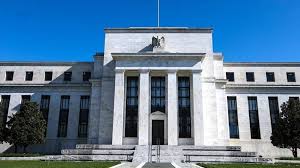Economic Forecasts: Possible Reductions in US Interest Rates During 2025

The latest survey by "Reuters" included the opinions of a select group of economic experts, revealing a significant shift in expectations for US monetary policy, as the majority of analysts anticipate a reduction in interest rates at the upcoming Federal Reserve (the US central bank) meeting scheduled for this month.
The survey results, conducted from October 15 to 21, indicate a strong consensus among experts suggesting a reduction of 25 basis points in this month's meeting, followed by a similar reduction by the end of the year during the December meeting.
Seventy-one percent of the experts participating in the survey expect this additional reduction to occur in December, making this year witness two consecutive reductions, following the Fed's initiation of an easing cycle with a cut last September.
With a detailed analysis of the numbers, among the 117 economists who participated in the survey, 115 experts predicted another reduction in interest rates by 25 basis points on October 29, stabilizing the rate within a range of 3.75% to 4%.
Only two experts predicted a more accommodative scenario, consisting of a quarter-point cut this month, followed by a half-point cut in the last meetings of the year.
This shift in expectations, compared to last month's predictions which did not exceed one cut during 2025, is attributed to a change in the expectations of the Federal Reserve Board members themselves, as it appears that the central bank has prioritized addressing the risk of a weak labor market over the risks of rising inflation.
Commenting on these shifts, American economist at HSBC, Ryan Wang, stated: "It is fair to say that about half of the current Federal Open Market Committee members are focusing more on the labor market, while the other half are concerned about inflation risks."
The survey also revealed a state of divergence and uncertainty among experts regarding the ultimate path of interest rates in the long term. Regarding the expected level of rates by the end of 2026, participants were divided into seven different directions, with their expectations ranging from a low range of 2.25%-2.5% to a high range of 3.75%-4%.
Analysts attribute this wide division, in part, to speculation surrounding the policy of Jerome Powell's successor as chair of the board, after his term ends next May, adding an additional layer of uncertainty to the future monetary landscape.